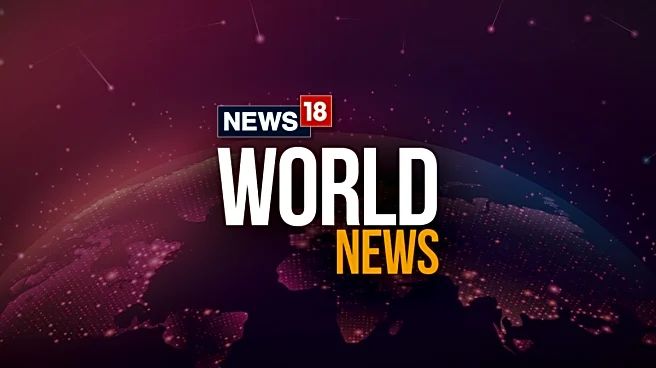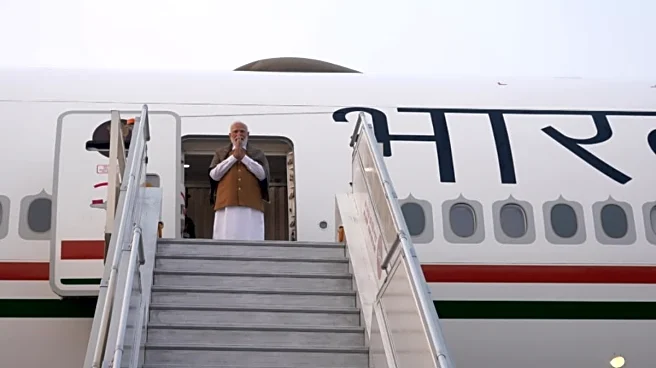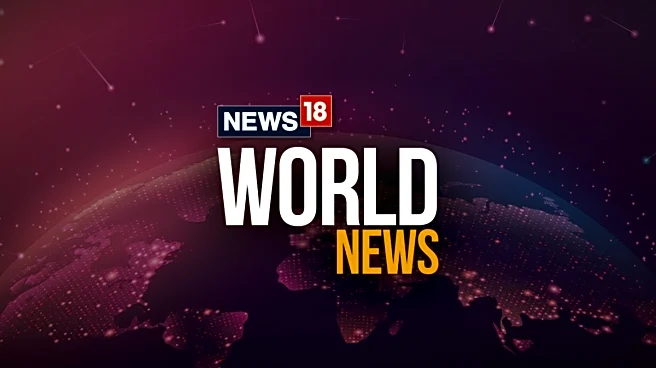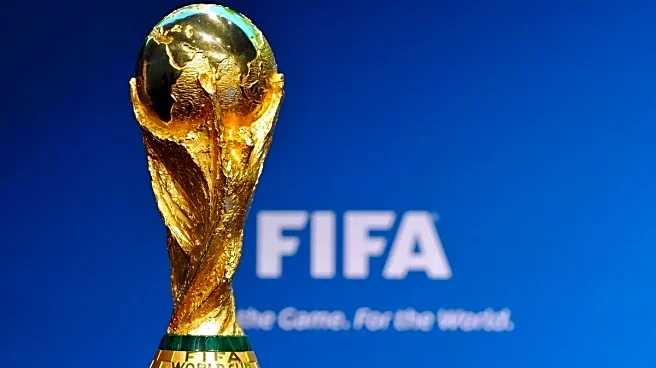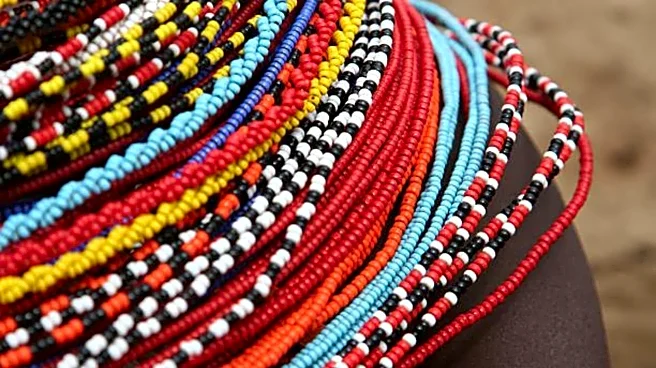As Prime Minister Narendra Modi landed in Johannesburg for the G20 summit, he arrived as an unlikely champion of the continent. Over four visits to South Africa in less than a decade, alongside stops in Ghana
and Namibia that marked the first such trips by an Indian leader in over three decades, Modi has quietly assembled something that eludes much Western and Chinese engagement with Africa: sustained partnerships built on trust and mutual development goals.
No 30-year infrastructure loans creating perpetual debt, or loan shark relationships, or hijacking a port for 100 years. Instead, 200 entrepreneurs signing binding agreements on vehicles and medicines. Namibia deploying India’s digital payment system and malaria drugs costing 50 cents rather than $10. India, under Modi, has built a relationship with Africa on a mutual understanding of needs.
This week’s summit carries symbolic weight, being the first time the G20 convenes on African soil, and the African Union sits as a permanent member, a prize India secured during its 2023 presidency. However, the real story lies in what precedes this moment: how an emerging economy has positioned itself as Africa’s most reliable development partner, not by projecting power, but by delivering practical solutions grounded in India’s own hard-won development experience.
The IA (India-Africa) Calculus
Distance clouds judgment. India’s engagement with Africa rarely generates the geopolitical drama that attracts Western media focus. China’s $280 billion in African trade dwarfs India’s roughly $100 billion. But therein lies the rub: multiple African nations now strain under Chinese debt burdens from infrastructure projects whose returns never materialised.
PM Modi’s four South Africa visits since 2016, including bilateral engagement in 2016, BRICS summits in 2018 and 2023, and now the G20, signal a consistency unusual in great power politics. When governments shift, foreign policy priorities often pivot. South Africa has seen 2 presidents in the last decade. ANC, while still the biggest party, now leads a coalition government. India has also undergone a change politically; Modi’s BJP also now rules with the help of coalition partners, the National Democratic Alliance.
There has been global economic upheaval and geopolitical realignment, but India’s connection to Africa, and in particular to South Africa, has remained strong. The pattern extended in July. Modi became the first Indian prime minister to visit Ghana in over 30 years and the first ever to set foot in Namibia in 27 years.
During the Ghana stop, India and Ghana elevated bilateral ties to a “Comprehensive Partnership”, with detailed discussions on economic collaboration, energy cooperation, and defence partnerships. In Windhoek, PM Modi addressed parliament, an honour rarely extended, and received Namibia’s highest civilian award while announcing that Namibia would become the first nation globally to implement India’s Unified Payments Interface through a formal technology agreement with its central bank.
And the UPI wasn’t some throwaway technology that India wanted to sell off to its African neighbours across the sea. It represents a core piece of India’s digital revolution, which processes billions of transactions worth trillions of dollars, and that brought financial inclusion to India’s remotest villages, a problem that Africa faces as well.
Three Milestones: Business, Infrastructure, and Digital
India’s Africa strategy crystallised across three domains during 2024-2025. In Pretoria this March, over 200 entrepreneurs signed 200-plus memoranda of understanding at the India-South Africa Business Conclave, with pharmaceuticals and defence topping discussions. Indian antimalarial drugs now cost 50 cents per course, less than a tenth of the branded price, whilst Indian generics comprise over 50% of African pharmaceutical imports at 10-20 per cent of brand equivalents.
Infrastructure has followed. India has extended $14.07 billion in concessional credit lines to 42 African nations, funding 357 projects across railways, roads, power generation, ports, and hospitals. Uganda received $141 million for electricity transmission; Rwanda secured $200 million for industrial and special economic zones; Tanzania and Mozambique partnered on agricultural development.
Digital infrastructure completed the triad. Namibia became the first African nation to sign a licensing agreement adopting India’s Unified Payments Interface in July, with rollout beginning in September. Ghana and Kenya are advancing similar deployments. Togo adopted India’s Modular Open-Source Identity Platform for national digital ID. It is India’s open-source infrastructure that nations can adapt for their own contexts.
Under India’s International Technical and Economic Cooperation programme, approximately 5,000 African officials receive scholarships annually, with Indian campuses operating in Tanzania and Uganda creating long-term institutional presences.
A Different Model Amid Great Power Competition
PM Modi arrived in Johannesburg amid intensifying competition for African favour. China’s investments dwarf India’s in scale, with Sino-African trade exceeding $280 billion, nearly triple India’s figure. Yet mounting evidence suggests Beijing’s model generates growing concerns. Multiple African nations struggle to service Chinese loans for infrastructure projects whose economic viability proved questionable, creating dependencies that constrain policy autonomy.
The Belt and Road Initiative’s African legacy is decidedly mixed: gleaming infrastructure alongside crushing debt burdens, technology transfer promises unfulfilled, and wariness about reliance on a single major power.
Western engagement has historically oscillated between humanitarian posturing and extractive economics, with contemporary initiatives struggling to gain traction amid broader preoccupation with other regions. The current moment underscores this: President Donald Trump’s refusal to attend this summit has been widely interpreted across the continent as contempt for African priorities and institutions.
India occupies different ground. A shared and painful colonial experience creates genuine empathy distinct from Western paternalism. PM Modi routinely references shared liberation struggles and Mahatma Gandhi’s influence on African independence movements. Non-aligned movement roots establish credentials as a voice for developing nations rather than a hegemonic power seeking spheres of influence.
Critically, India lacks the imperial baggage complicating Western-African relationships or the debt-trap concerns surrounding Chinese engagement. Indian credit lines operate on genuinely concessional terms, involve significant local employment and capacity building, and prioritise functional infrastructure addressing development bottlenecks rather than prestige projects. The emphasis on pharmaceuticals, digital public infrastructure, training programmes, and appropriate technology reflects attention to African needs rather than Indian surplus capacity seeking markets.
India’s G20 Moment
This week’s summit marks the G20’s first African convening, but more fundamentally, it reflects institutional architecture reshaped during India’s 2023 presidency. By championing African Union permanent membership, Modi secured what amounts to a structural victory in global governance. Previously, only South Africa represented 1.2 billion people and 55 nations; now the AU holds equivalent membership status to the European Union.
African voices now have institutional channels for coordinated advocacy within the world’s premier economic forum. The substance matters more. The AU’s membership enables collective action on debt sustainability, climate finance, fair trade rules, and technological access, issues where Africa’s 55 nations, acting individually, lack negotiating leverage.
It provides a platform to address illicit financial flows, estimated at $88.6 billion annually from Africa, representing 3.7% of continental GDP, requiring international cooperation. Consistency is needed to strengthen the Global South’s voice within the forum, preventing the lurching between disconnected agendas that has historically marked G20 transitions. With Indonesia, India, Brazil, and now South Africa prioritising Global South development concerns, a narrative has emerged centring emerging markets’ priorities within this crucial institution, with India as its leading voice.
Substance Over Summitry
When PM Modi addresses Johannesburg this week, he speaks as the prime minister who ensured the African Union finally gained G20 membership, an achievement reflecting India’s commitment to reshaping global institutions around Global South interests. Moreover, PM Modi would also be the most experienced and tallest leader attending the G20 Summit.
Relations with Africa have been built incrementally over the years and represent a distinctive approach to south-south cooperation. India’s model neither extracts like traditional powers nor creates perpetual debt like some alternatives. Instead, it recognises Africa not as a problem requiring external solutions but as a partner with agency, priorities, and capabilities complementing India’s strengths.
Challenges remain formidable, and results decidedly mixed in places. Yet amid great power competition often characterised by extractive economics or paternalistic development models, India’s approach offers something different: partnerships that build capacity rather than dependency, technology transfers that empower rather than control, and solidarity translating into concrete cooperation.
Whether this model can scale from bilateral achievements to continental transformation remains an open question. But for now, as G20 leaders gather in Africa for the first time, India’s sustained engagement demonstrates that Global South solidarity can achieve results.


/images/ppid_a911dc6a-image-176365542958663119.webp)

